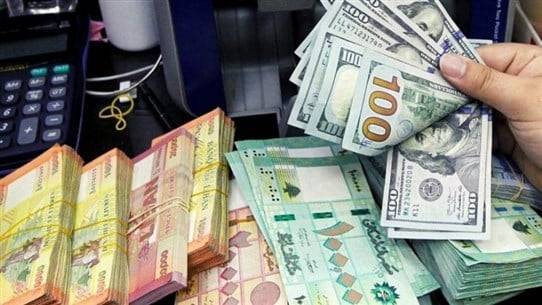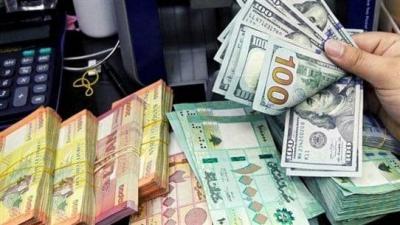The "yo-yo effect" theory applies to the current reality of monetary policy followed since the crisis erupted at the end of 2019. Just as an improper diet can lead to cyclical weight loss and gain, manipulating the dollar results in "brutal" fluctuations in the exchange rate. While failure in dieting leads to weight gain, the inability to secure constants for maintaining a relatively stable exchange rate pushes towards very serious economic, social, and financial consequences. Prices have not decreased in proportion to the dollar's depreciation; this is the bitter truth regarding the improvement of the lira's value.
In a pharmacy located far from Beirut, a customer stood in disbelief two days ago at the unchanged prices. The price of an anti-inflammatory he bought a week ago when the exchange rate was 40,000 lira remained the same despite the dollar dropping by 5,000 lira. When asked why, the employee replied, "We didn't change the pricing!" This delay in price adjustments at some pharmacies, along with other businesses and service providers, causes consumers to lose up to 12.5% of their income. Since the entire public sector, a significant part of the private sector, and expatriates receive cash dollars and exchange them to meet their daily requirements, the losses incurred by citizens are not only substantial but compounded; once from exchanging at a lower rate and again from purchasing at a higher rate.
**Dollar at 37,100 Lira**
While various money exchange shops were trading the dollar at prices ranging between 34,000 and 35,000 lira yesterday morning, the Ministry of Energy released a price formation table reflecting an increase of 49,000 lira for gasoline and 62,000 lira for diesel. This is due to rising fuel prices calculated based on the dollar's price of 37,100 yesterday, instead of 35,500 from the previous day. Thus, a citizen who exchanged their dollar at 34,000 lira and filled two gasoline tanks at the rate of 37,100 lira faced a loss of 60,000 lira per tank, amounting to 120,000 lira in total.
Examples of losses faced by citizens due to the "yo-yo effect" on the exchange rate are countless. They are much greater in villages and areas where consumers depend on shops with small capital. The owners of these shops are genuinely suffering from the rapid fluctuations in the exchange rate. The argument that price reductions do not affect sellers is debatable. It is true that selling goods at the new exchange rate allows merchants to buy the same quantities, yet their capital in lira is declining. Additionally, the frequent daily or even hourly price increases averaging 2,000 lira against the dollar impose losses proportionate to these price hikes, which many cannot bear.
**Benefits of Pricing in Dollars**
In light of this reality where both citizens and merchants lose, the only logical solution becomes pricing in dollars, known as "dollarization of prices." This solution addresses many problems, according to Dr. Patrick Mardini, head of the Lebanese Institute for Market Studies, including:
- Reducing price fluctuations and allowing citizens to know the true price of goods.
- Providing market transparency for both traders and consumers.
- Securing stability, assisting in attracting investments, as the absence of a solid and clear basis for determining production costs and pricing mechanisms alienates investors and deprives the country of many promising opportunities.
- Eliminating the margin of "uncertainty" traders add to their product prices in anticipation of potential increases in the exchange rate when purchasing goods. For instance, traders might set prices based on 38,000 lira or even higher, even if the dollar drops to 35,000 lira, to protect themselves against future exchange rate spikes.
- Lowering prices of various goods and services due to genuine pricing processes.
**Strengthening State Finances**
The advantages of pricing in dollars extend beyond immediate and fast impacts, moving into a second phase where "wages for workers could be paid in dollars, given that institutions charge their fees or prices for their products in dollars," from Mardini’s perspective. "After this stage, the state could demand that the private sector pay taxes and fees in dollars, thus improving its finances and significantly increasing its revenues."
**Reducing Losses for Citizens and Merchants**
Furthermore, pricing in dollars allows citizens holding hard currency—who have become the majority due to public sector salaries being paid in cash dollars—to pay directly in dollars. "This limits, on one hand, the loss for citizens in the process of converting dollars to lira in the parallel market at a low rate, and reduces, on the other hand, the losses for merchants forced to convert lira to dollars at a high rate," according to Adnan Rammal, a member of the Economic and Social Council. Consequently, "the loss gap in currency exchange operations, which only currency traders benefit from, decreases. Sellers maintain their profits, consumers retain their purchasing power, and pressure on the dollar decreases due to reduced demand from merchants." Rammal believes that "from a scientific standpoint, it is preferable to price in dollars and leave consumers the freedom to pay in cash dollars or in lira according to the current exchange rate. This process protects citizens not only from not witnessing price reductions with the dollar decline but also helps foster real competition in the market and between stores." He states that "with the exception of daily consumer goods, all durable goods, such as cars, electrical appliances, car parts, and furniture, have become priced in dollars, especially with merchants paying for them in dollars and incorporating taxes and fees calculated in Lebanese lira based on the exchange rate into the final cost."
**Populism**
Given all these benefits, the question arises: what hidden obstacle remains that prevents widespread dollar pricing? Notably, the state itself (the Ministry of Tourism) allowed hotels and restaurants to price in dollars during last summer's season to protect businesses from price fluctuations, which could lead to issues with tourists and expatriates. Why is it not applicable to other sectors as it is with tourism, which has proven positive results? "Because simply, the Ministry of Economy still refuses to make this decision," Mardini believes. "For the minister who seeks popularity, he can no longer showcase his achievements in imposing penalties on businesses that do not reduce prices with every dollar depreciation."
Certainly, another obstacle related to "sovereignty" hinders dollar pricing. However, has this sovereignty been respected historically with allowing mobile companies to bill in hard currency? Is this sovereignty respected in the daily erosion of citizens' purchasing power due to the fluctuation game of the dollar's exchange rate? And is pricing in dollars alone the only violation of national sovereignty?




